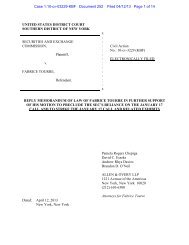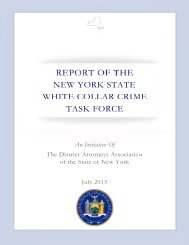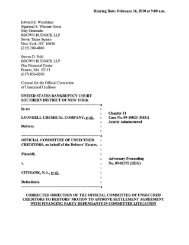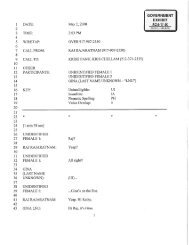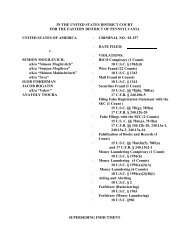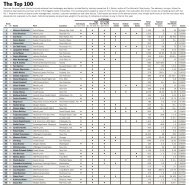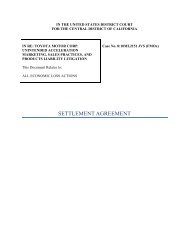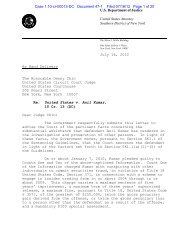Salz Review - Wall Street Journal
Salz Review - Wall Street Journal
Salz Review - Wall Street Journal
Create successful ePaper yourself
Turn your PDF publications into a flip-book with our unique Google optimized e-Paper software.
<strong>Salz</strong> <strong>Review</strong><br />
An Independent <strong>Review</strong> of Barclays’ Business Practices<br />
78<br />
8.6 How did leading bankers reach these sobering conclusions? The answer seems to lie<br />
partly in the fact that the crisis (and other events covered by this report) highlighted<br />
in the public eye the imbalance between high pay (at least for some), high risk, and<br />
treatment of customers and other stakeholder interests. It has become increasingly<br />
apparent that the UK public also considers its major banks to be semi-public<br />
institutions. The crisis seemed to reveal levels of carelessness relating to capital<br />
adequacy, concentration of risk and unsustainable funding models. This carelessness<br />
was possibly encouraged by the Government who were content to allow the<br />
misplaced optimism that a new economic paradigm was evolving. The idea that<br />
leaders of some banks somehow allowed their organisations to ‘forget’ these<br />
fundamental principles and to pay disproportionate rewards, based on a share of<br />
unsustainable profits, led to a conclusion that leaders, tone from the top and culture<br />
went awry. Bank leaders became identified with driving profit and shareholder return<br />
rather than promoting a clear sense of purpose, instilling good values, and doing the<br />
right thing for the customer and the long-term good of the organisation. Banks<br />
became synonymous with flawed business practices.<br />
8.7 Appropriate business practices are always important, but disproportionately so in<br />
higher-risk industries where key business concerns transcend growth, profitability<br />
and competitive advantage. In such industries, management focus on developing<br />
business practices which emphasise the importance of never compromising safety or<br />
of managing risk in a way which avoids catastrophic loss. Banking certainly falls into<br />
the latter.<br />
8.8 When culture compromises business practices, severe reputational risks can ensue –<br />
as the Ford Motor Company experienced in the late 1970s. In 1977, a magazine<br />
article 145 , citing a 1973 Ford internal cost-benefit analysis, claimed that the Ford<br />
Pinto’s structural design was dangerous for passengers and that Ford believed it<br />
would be cheaper to pay off lawsuits resulting from damage and injuries than to<br />
recall vehicles for repair. This caused huge damage to Ford’s reputation, with Ford<br />
ultimately directed to recall the Pinto in 1978 for safety failures. 146<br />
8.9 The lessons from other high-risk industries include fostering a culture where:<br />
leadership and operational discipline is focused on areas of highest risk; speaking up<br />
and working collaboratively with regulators and with other stakeholders is<br />
encouraged; and risks and the appropriateness of business practices are continually<br />
evaluated. Industries which have encountered trouble, or which actively look for<br />
potential trouble and collaborate in working to avoid it, offer some useful lessons for<br />
banks. Appendix D summarises what other industries have done to create the right<br />
cultural context, and describes how these lessons can apply to banks.<br />
8.10 Culture is experienced socially and intellectually. It is the experience which<br />
distinguishes being a customer or employee of one organisation from being a<br />
customer or employee of another. Values are the foundation of culture. They<br />
represent the core of what is important – the shared principles by which individuals<br />
and groups in organisations make choices. They help people to determine that which<br />
145 Mother Jones, Pinto Madness, September/October 1977 issue.<br />
146 See Appendix D for further details of this case.




